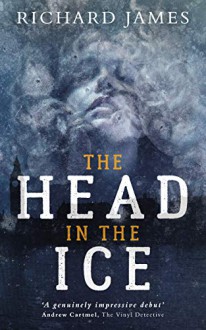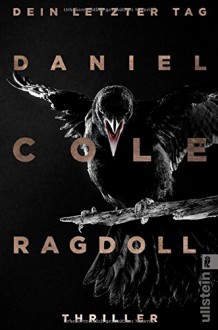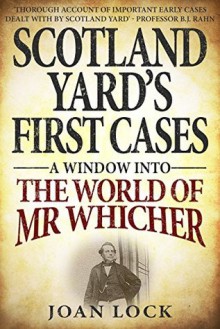
I thank NetGalley and Farrago for providing me an ARC copy of this book that I freely chose to review. Let me clarify that this novel was first published in 1964 by Cape, and Farrago is now republishing all the books in the series.
In brief, this book is a blast. I hadn’t heard of the Dover series and had never read any of Joyce Porter’s books before (more fool me!), but I’m pleased to have discovered both, the character and the author. While the character is truly dislikeable, the author had a talent for creating solid and engaging mysteries inhabited by a fantastic array of characters, and her observational skills and her comedic timing turn her books into a peculiar creation, somewhere between the satire and the farce.
I’ve been trying to find a way to describe this book. It is clearly a mystery and as I said above, it is a good, solid mystery, with red herrings, twists, turns and enough clues to make most lovers of the genre enjoy the putting together of the puzzle. You even have the mandatory summing up at the end, by Detective Chief Inspector Dover, but like everything else in the book, any similarity with what would happen in a true golden age mystery (yes, Agatha Christie comes to mind) is pure coincidence. You’ll have to read the book to judge by yourselves what you think of the ending, but it made me chuckle. I guess I would call it a vintage cozy mystery (if such a thing exists). It is not a standard modern cozy mystery, because although we do have some of the typical elements of those (a peculiar investigator, a strange crime, and a weird assortment of characters), the investigator here is a professional of law enforcement (to call him something) from Scotland Yard and all (the fact that the Yard are keen on sending him as far away as possible notwithstanding), and rather than being engaging and likeable, he is quite the opposite. In some ways, the novel has element of the police procedural, of the period, of course, and the mystery plays a more important part than it does in some of the modern cozy mysteries, where the main character is usually an amateur and his personality, her relationships, her business/profession, and her adventures can take up much of the novel.
Dover is a great creation. He is terrific and horrible all at the same time. He is lazy. He will go to any extents not to make any effort, either mental or physical. He is completely self-centred and totally uninterested in his job. There is no rule he won’t break in order to make his life easier and get a quick result. He exploits Sergeant MacGregor, making him do all the donkey work, and scrounging his cigarettes; there isn’t an invitation to food or drink he ever turns down; he is prejudiced, short-tempered and blows his top at the drop of a hat; he is pompous and never listens to anybody… As the back matter of the book says: “Detective Chief Inspector Wilfred Dover is arguably the most idle and avaricious hero of any novel, mystery or otherwise. Why should he even be bothered to solve the case?” This is not a novel for those who are looking for a character to root for. Although his sergeant is the total opposite, when it comes to solving crimes, he is methodical but not a great asset, either. The mystery takes place in a small town, mostly around what would nowadays be called a luxury housing state, and we come across a fantastic catalogue of characters and suspects, from the slightly odd to the wildly eccentric, and every shade in between. The local law enforcement sounds pretty normal in comparison, although the police women we meet are something else as well. Sorry, I’d rather not spoil it for readers.
The story is narrated in the third person, and although we mostly follow Dover’s adventures, we are clearly outside observers, rather than seeing things from his point of view. We might be privy to some of his thoughts and those of the other characters, but always as spectators. People who read the novel and feel disgusted by the lack of political correctness and the character’s flaws miss the distance between the narrative’s perspective and the character, in my opinion. We are not meant to like him or agree with his approach, quite the opposite. Of course, the novel is of its time, and that’s another one of the joys of it. I loved the language, the references to popular culture, the snippets of information about clothing, habits, social mores… It occurred to me that people researching the era (writers, designers, scholars…) would have a field day with this book.
I don’t want to go into too many details about the plot, but we have a pretty special victim, a bunch of characters from the ridiculous to the more ridiculous (dope fiends, yapping dogs, leery aristocrats, amateur detectives, defrocked priests (well, sort of), a writer interested in little known tribes…), blackmail, a ransom note, a missing body, adultery… and more. Take your pick.
Although I know comedy and sense of humour are very personal, and many of the references in the book are very British, I found it really funny and witty. The book is eminently quotable, but I had to try to offer you at least a few snippets, so you can get an idea:
I was nearly fifty when I married. Up till then I had always avoided matrimony like the plague, going on the principle that there is no need to throw yourself into the river to get a drink of water.
Dover didn’t approve of foreigners, mainly on the irrefutable grounds that they were un-English, and he was looking forwards to giving Boris Bogolepov, guilty or not, a rough old time just for the sheer hell of it.
It’s no good going round with an open mind like a vacuum cleaner because all you’ll finish up with is…’ Dover paused to work this one out ‘… is fluff!’ he concluded triumphantly.
I recommend this book to people who love cozy mysteries but are looking for something leaning more towards the police procedural side, and who prefer their humour rather sharp and British. Although I’ve read far worse, and there is only limited violence (fairly slapstick), the novel is non-PC (not that it condones the points of view exposed, but…) so it could be offensive to people reading it as a straight narrative. On the plus side, royalties from the book got to the work of the Friends of Friendless Churches (yes, they do exist, and do a great job as well). Go on, try it. You know you want to!

 Log in with Facebook
Log in with Facebook 









